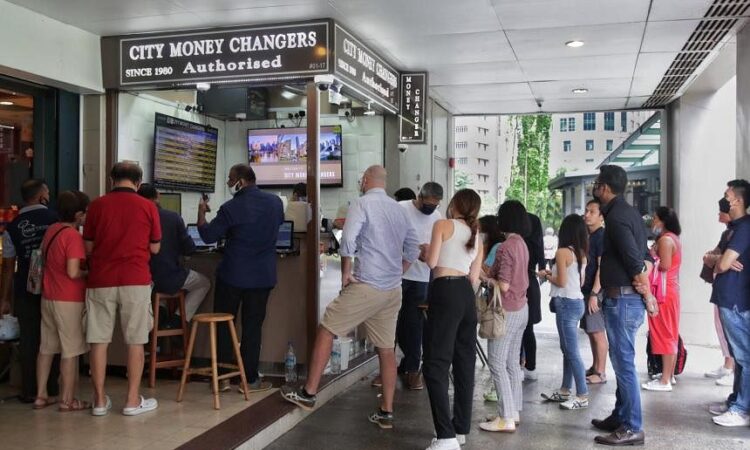
SINGAPORE – The Singapore dollar has trounced currencies like the ringgit, yen and Australian dollar while holding up well against a stronger euro and US dollar in 2023, enabling Singaporeans with extra cash to better afford school fees, holidays and shopping sprees overseas.
But those with plans to travel should expect to soon enjoy less for every Singapore dollar converted into foreign exchange and spent abroad, as the local currency could start to lose its resilience against major currencies by next year, analysts said.
Since October 2021, the Monetary Authority of Singapore (MAS) has allowed the Singapore dollar to appreciate within an undisclosed policy band against a basket of its major trading partners’ currencies.
This is done to cool inflation by guiding the Sing dollar’s nominal effective exchange rate (S$Neer) higher within the band, allowing Singaporeans and domestic businesses to benefit from the increased buying power availed by a stronger local currency. Overall inflation in Singapore is now around 4 per cent.
Still, Singapore has lost steam with exports falling for an 11th straight month in August. The strong Singapore dollar makes locally produced goods more expensive for foreign buyers, implying that they are less likely to purchase goods made here.
With global demand declining, the local economy is forecast to grow at a much slower pace in 2023 compared with the year before.
As such, analysts now reckon the S$Neer is trading at the upper range of the policy band. While the consensus is for MAS to keep its policy on hold to further keep inflation in check at its next meeting on Friday, more see a limited runway for the local currency to continue appreciating.
“We no longer see the S$Neer outperforming other currencies moving forward. The next big move for the Singapore dollar will come if and when MAS signals a more dovish policy stance, which will lead to a weakening of the currency,” said Mr Michael Wan, senior currency strategist at MUFG Bank. MUFG sees US$1 being equivalent to S$1.32 in the next 12 months, strengthening considerably from S$1.365 on Monday.
Meanwhile, investors have turned to the US dollar amid rising US Treasury yields, and are expected to continue buying the greenback as a safe haven currency following an escalating conflict between Israel and Palestinian militant group Hamas, said Maybank Singapore head of FX research Saktiandi Supaat.
The Singapore dollar should also start to weaken against the euro next year as the euro zone recovers, he added.
The region has struggled as a result of cost pressures arising from a spike in oil prices in the wake of the ongoing Russia-Ukraine war, among other developments, and economic weakness arising from a trade slowdown with China, including a manufacturing slump in Germany.
“But markets have now priced in higher commodity prices from a protracted conflict between Russia and Ukraine. Corporate risk-taking and investments should return, given that the euro zone is supported by its population size and well-diversified sector mix from agriculture and technology,” he said.
Against that backdrop, Maybank sees strength returning to the euro and the Sing dollar weakening against the currency from the middle of next year. On Monday, one euro traded for S$1.44.



